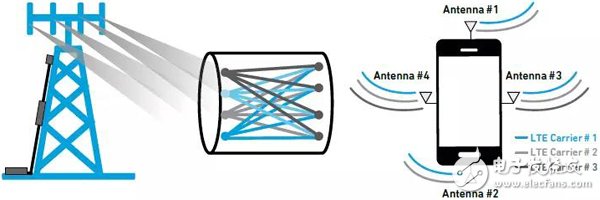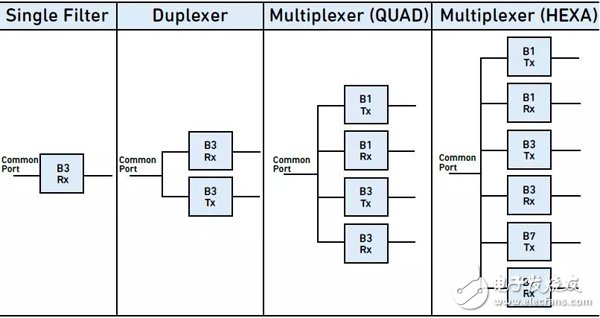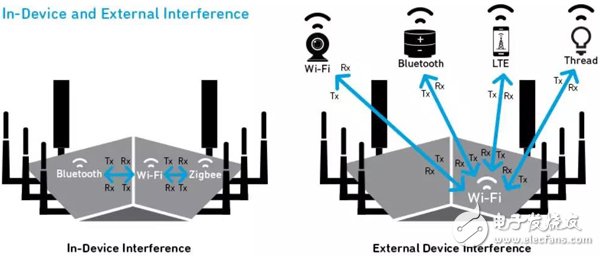The rapid growth of mobile wireless data and 4G LTE networks has led to a growing demand for new frequency bands and the combination of frequency bands through carrier aggregation to accommodate wireless traffic. The 3G network only uses about five frequency bands, and the LTE network currently uses more than 40 frequency bands. With the arrival of 5G, the number of frequency bands will be further increased.
Interconnected devices must send cellular signals, Wi-Fi signals, Bluetooth signals, and GPS signals across multiple frequency bands while avoiding interference. We may immediately think of smartphones, but the same applies to roof mounted shark fins, cellular base stations, radar and communication systems, and industrial, scientific, or medical applications connected to the Internet of Things (IoT). Appeared.
A smartphone without a filter is a brickLike antennas, filters are becoming an increasingly important part of networked mixers. The device receives various frequencies, and the filter allows the desired frequency to pass while suppressing unwanted frequencies. In other words, the filter is like Gandalf in The Lord of the Rings book by John Ronald Ryle Tolkien: "You don't want to go past here!" Today's equipment is usually not designed to be disturbed. Fitted with 30 to 40 filters. As the number of filters required for the next generation of high-end smart phones is more, this situation will become even more complicated.
Filter Design ChallengeFilters are an essential tool for RF design engineers, but they also face many challenges. For the starter, the filter performance changes with temperature. Filters in various types of equipment today can withstand an average temperature of 60 degrees Celsius (140 degrees Fahrenheit) or higher, while indoor filters experience an average temperature of 25 degrees Celsius (77 degrees Fahrenheit) in shark fins or roofs. Embedded filters can withstand even higher temperatures. The higher the temperature of the filter, the harder it is to filter out a particular frequency, and the more likely the signal is to "drift" into the adjacent frequency band.
Since many newly allocated frequency bands are very close to the existing frequency bands, managing temperature drift becomes even more important. At the same time, Carrier Aggregation (CA) is also rapidly evolving. Cellular service providers can combine up to five carrier channels to improve network performance. Precise filtering is a prerequisite.

To solve the temperature problem, the RF industry is developing low-drift and drift-free filter technologies. Surface Acoustic Wave (SAW) and Bulk Acoustic Wave (BAW) filters maintain their highly stable performance over temperature, meeting the stringent performance requirements of emerging equipment.
As mentioned above, the next generation of high-end smartphones also need more filters. Like all other components of RF, the space left for the filter is very limited. Engineers must be able to integrate multiple filters into smaller spaces in order to achieve higher performance.
Duplexers, triplexers, quadruplexers, and even six-manipulators are commonly referred to as multiplexers. Multiplexers integrate multiple filters in a single device, helping designers save space, simplify designs, and meet performance requirements while avoiding interference.

The final challenge is Wi-Fi. Although some people may still use smartphones to send text messages and make phone calls, most people use smart phones to browse the web, watch videos, and access social media. Because the frequency bands of LTE and Wi-Fi are very close, the Wi-Fi signal will cause the device to reduce the sensitivity of receiving LTE signals if it is not filtered. The lower sensitivity will bring us a lot of troubles, such as dropped calls or interruptions.

For this we need a special filter. The coexistence filter allows Wi-Fi and LTE signals to coexist in harmony, which is absolutely true. This filter can suppress closely adjacent frequencies, so that we do not miss the mother's phone when we browse friends' ballot stories. They also play an important role in the networking of cars because LTE, Wi-Fi, Bluetooth, GPS, and vehicle-to-vehicle (V2V) and vehicle-to-infrastructure (V2I) communications must coexist without interference.
Without a filter, there will be wireless traffic jamsIn today's mobile environment, the number of frequency bands required for a device is staggering. With the advent of the 5G era, this trend will only intensify. Although supporting all frequency bands will cause interference problems, the problem can be resolved with the use of filters. Without a filter, the network simply cannot operate.
DLP Home Projecror-The principle is mainly to switch the light through the control of the micro-mirror, so as to realize the color scale and gray scale. On the small DMD chip, there are nearly a million small mirrors that are smaller than the hair The advantages of DLP projectors are: long service life and fast response speed
Dlp Home Projecror,dlp projector remote,dlp projector portable,dlp 1080p projector,dlp projector 4k
Shenzhen Happybate Trading Co.,LTD , https://www.happybateprojectors.com